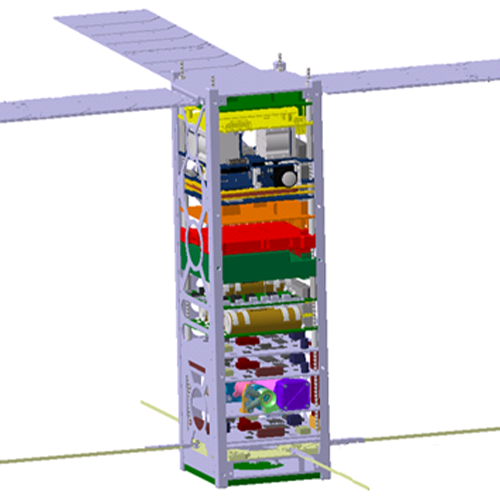CHESS – Constellation of CubeSats: Analyzing the drivers of the Earth’s exosphere with MS and GNSS
- 1Physics Institute, University of Bern, Bern, Switzerland (rico.fausch@space.unibe.ch)
- 2Institute of Geodesy and Photogrammetry, ETH Zurich, Zürich, Switzerland
- 3Ecole Polytechnique Fédérale de Lausanne EPFL, Lausanne, Switzerland
- 4Institute of Systems Engineering, University of Applied Sciences Western Switzerland HES-SO Valais, Sion, Switzerland
- 5Competence Center for Electronics, Lucerne University of Applied Sciences and Arts HSLU, Horw, Switzerland
- 6Laboratory of Astrophysics, Ecole Polytechnique Fédérale de Lausanne EPFL, Versoix, Switzerland
- 7Haute Ecole Arc HES-SO, St-Imier, Switzerland
Chemical composition and density measurements of the upper atmosphere provide key insights into the origin and evolution of celestial objects. The density and the chemical composition of planet’s atmosphere may evolve from a hostile, dense primary atmosphere to a life‐harbouring tertiary atmosphere as present on Earth by losing atmospheric species to space upon formation of the object. The present-day atmospheric escape rates can be measured or inferred from exospheric temperatures and density profiles, for many species of the upper atmosphere. By modelling, these escape rates can be adapted to conditions in the past to study the evolution of the atmospheric composition.
The terrestrial exosphere and upper ionosphere are complex dynamic regions that adapt to several endogenous and exogenous drivers. The Sun as such a driver forces the upper atmosphere to respond to the solar UV/EUV flux and solar energetic particles. These external influences cause a variation of both the density, extent, and the chemical composition of the upper atmosphere on several time scales ranging from minutes to the age of the Solar System leading to various phenomena including atmospheric evolution and night-side transport of species. Although these interactions have been extensively studied over the past decades, the scientific community still lacks some basic measurements in the terrestrial upper atmosphere to derive the exospheric temperatures and its variation as a function of the corresponding drivers.

Figure 1: Computer model of the 3U CHESS satellite.
Thus, we designed the CHESS mission consisting of two 3U CubeSat-type satellites on different orbits. The science payload of each spacecraft consists of a new generation of dual-frequency GNSS receivers for total air density measurements from drag and total electron content above the satellites and a compact time-of-flight mass spectrometer for in situ measurements of both the chemical composition and density in the upper atmosphere. Enabled by these two novel scientific instruments, the primary goal of the CHESS mission is to record an inventory of the neutral species and ions present at various heights in the exosphere. From these measurements, we will derive numerous atmospheric properties including exospheric temperature profiles, compositional variations of the exosphere, atmospheric escape rates, as function of the external drivers.
How to cite: Fausch, R., Wurz, P., Rothacher, M., Martinod, N., Trébaol, T., Villegas, A., Corthay, F., Joss, M., Kneib, J.-P., and Pazos, N.: CHESS – Constellation of CubeSats: Analyzing the drivers of the Earth’s exosphere with MS and GNSS, Europlanet Science Congress 2020, online, 21 September–9 Oct 2020, EPSC2020-17, https://doi.org/10.5194/epsc2020-17, 2020

